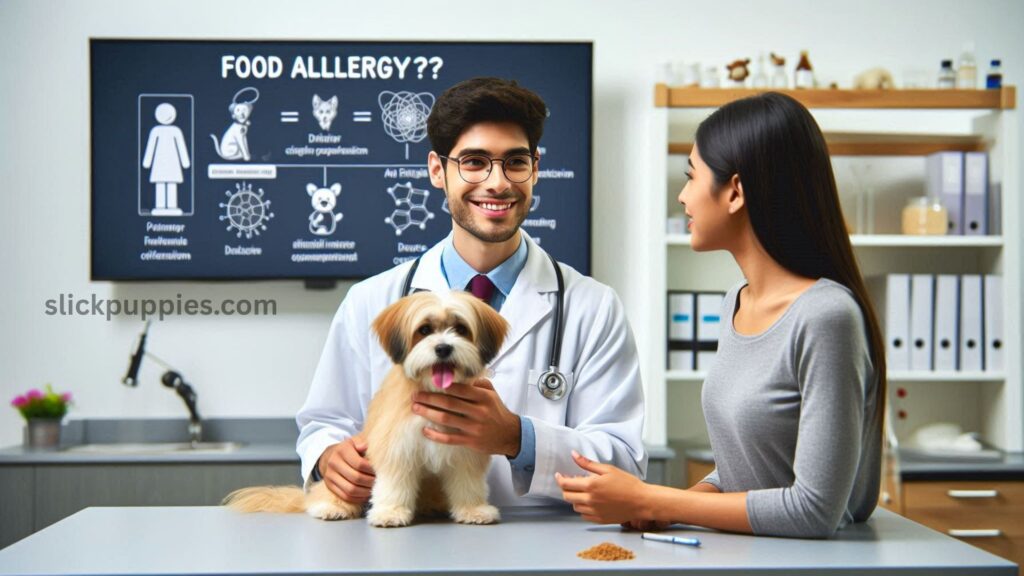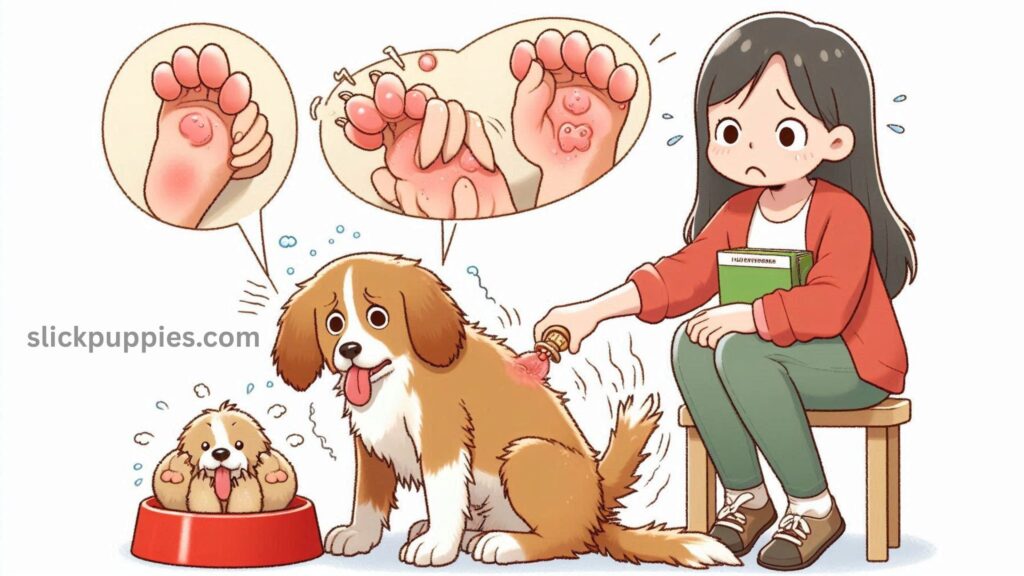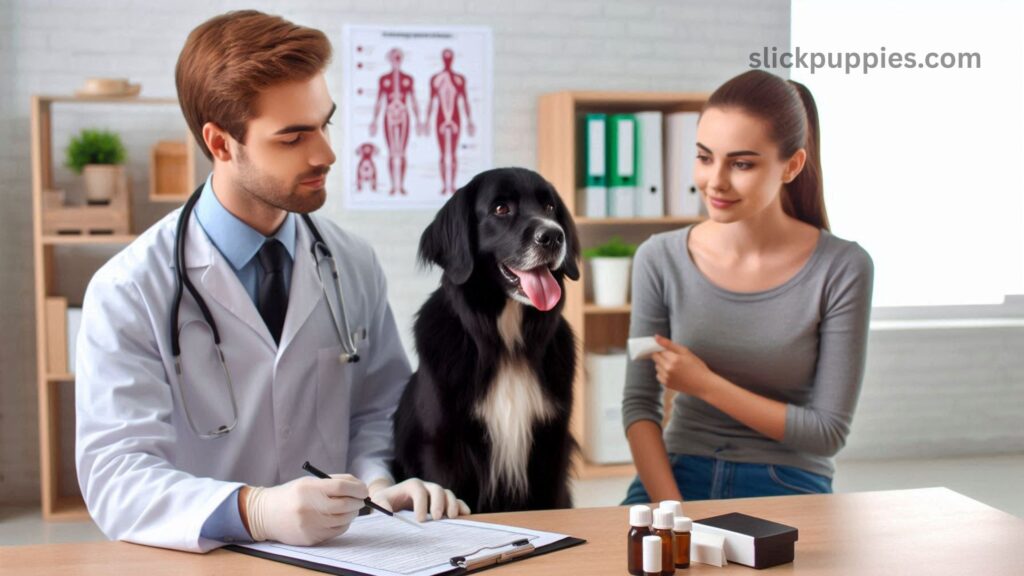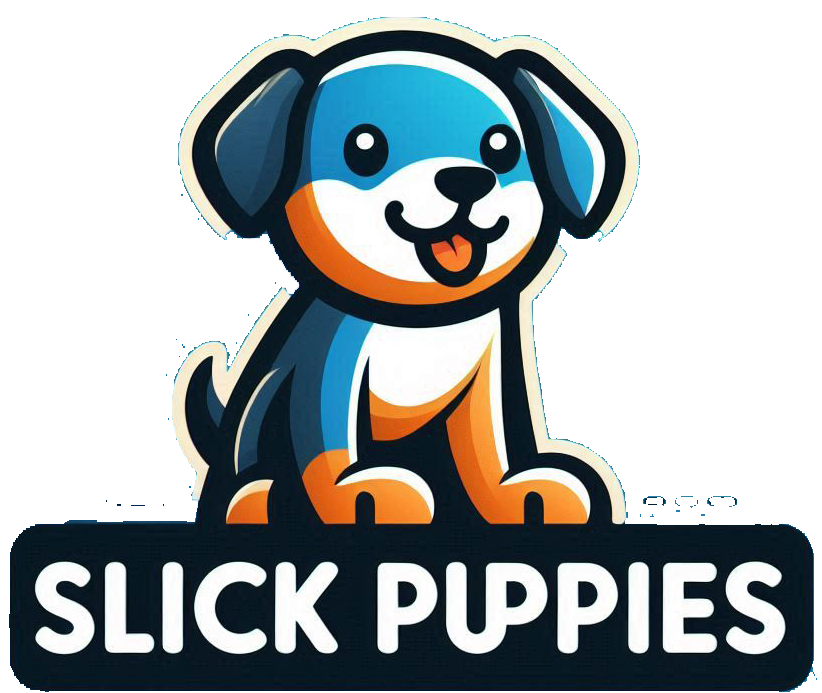Adverse food reaction (AFR) in dogs happens when their body reacts badly to a food that’s usually considered safe.
There are two main types:
- Food allergy – This involves the immune system.
- Food intolerance – This doesn’t involve the immune system but still causes digestive issues.
Even though they have different causes, food allergies and intolerances show similar symptoms and are diagnosed in the same way. The most common treatment is changing the diet, often to a hydrolyzed protein diet, which is easier on the stomach.
What Are Food Allergies in Dogs?
Food allergies in dogs happen when their immune system overreacts to something in their diet—usually a specific ingredient they’ve eaten for a while. Unlike a sudden reaction, food allergies develop over time rather than right after trying a new food.

The most common triggers are proteins like chicken, beef, and dairy. When a dog with food allergies eats something they’re sensitive to, their immune system mistakes the protein for a threat and attacks it.
This often leads to skin problems like itching, redness, and swelling, but it can also cause digestive issues such as vomiting, diarrhea, and gas.
That said, food allergies are rare in dogs—only about 0.2% of dogs have them. Environmental allergies, like seasonal allergies or flea/tick allergies, are much more common.
What Is Food Intolerance in Dogs?
Food intolerance is different from a food allergy because it doesn’t involve the immune system. It can happen at any time—whether it’s the first time your dog eats something or after they’ve had it for a while.
The problem ingredient could be a protein or something else in their food. A good example in humans is lactose intolerance—some people struggle to digest dairy, but it’s not an allergic reaction.
One key difference is that dogs with food intolerance may be okay with small amounts of the food, while a true food allergy can be triggered by even a tiny trace.
Symptoms of Food Intolerance and Food Allergies in Dogs
Food allergies and food intolerance in dogs can look very similar. Here are some common signs to watch for:

Skin Issues (Both Allergies & Intolerance)
- Itchy, red skin
- Frequent ear infections or skin infections
- Hair loss
- Licking or chewing paws (Vets often check for brown stains under the paws)
Digestive Issues (Both Allergies & Intolerance)
- Diarrhea
- Vomiting
- Excessive gas (lots of farting!)
- Weight loss
- Low energy or fatigue
Severe Allergic Reaction (Rare – Allergy Only)
Also Read: Can I Give My Dog Vitamins or Supplements?
Causes of Food Allergies and Food Intolerance in Dogs
Some dogs are more prone to food allergies or intolerances, and genetics might play a role. But experts still don’t fully understand why some dogs develop these issues while others don’t.

Dogs can have food sensitivities from a young age, or they might develop them later in life. While any dog can be affected, certain breeds—like Labrador Retrievers, West Highland White Terriers, and Cocker Spaniels—seem to be at higher risk.
The most common culprits behind food allergies and intolerances are proteins. Here are some ingredients that often cause issues:
- Chicken
- Beef
- Dairy
- Wheat
- Soy
- Eggs
If you suspect your dog has a food allergy or intolerance, talk to your vet about switching to a diet that’s easier on their stomach!
How Veterinarians Diagnose Food Allergies and Food Intolerance in Dogs
There isn’t a reliable allergy test for food in dogs. Blood tests are available, but they’re not considered accurate. Instead, vets diagnose food allergies and intolerances based on your dog’s symptoms, a physical exam, and how they respond to a food trial.

If your vet suspects a food allergy, they might recommend a food trial that lasts 8 to 12 weeks. It’s important to follow the plan exactly—no treats, no table scraps, and no sneaky snacks—because even a small amount of the wrong food can mess up the results.
Since some heartworm and flea/tick prevention products contain beef or chicken flavoring, ask your vet which ones are safe to use during the trial.
Common Food Trial Approaches:
- Hydrolyzed Protein Diet: The proteins in this food are broken down so tiny that your dog’s immune system doesn’t recognize them as allergens.
- Novel Protein/Carbohydrate Diet: Uses uncommon ingredients (like duck or venison) to avoid triggering a reaction.
- Skin Support Diet: These diets are packed with nutrients that help calm the immune system.
While there are some food allergy tests on the market, their accuracy is questionable. A food trial remains the gold standard for diagnosing food allergies or intolerances in dogs.
Treatment of Food Allergies and Food Intolerance in Dogs
Most food allergies and intolerances in dogs can be effectively managed with the right diet. But since every dog is different, there’s no one-size-fits-all solution—the best food is the one that works for your dog’s specific needs.
Also Read: What are the Signs of a Healthy Dog Coat?
Best Diet for Dogs With Food Allergies
Many special diets are available to help control food allergies, but they often require veterinary approval. This ensures that the ingredients stay novel (something your dog hasn’t been exposed to before) and that there’s no risk of cross-contamination, which could trigger a reaction.

Here are some vet-recommended diets for dogs with food allergies:
✅ Blue Natural Veterinary Diet™ HF Dog Food – Made with hydrolyzed salmon, meaning the protein is broken down so small that your dog’s immune system won’t recognize it as an allergen.
✅ Blue Natural Veterinary Diet™ NP Dog Food – Uses alligator as a novel protein, which is a great option for dogs allergic to poultry, beef, and other common animal proteins.
Best Diet for Dogs With Food Intolerance
Unlike allergies, food intolerances don’t involve the immune system, so they can usually be managed with a limited-ingredient, non-prescription diet. These foods contain only one protein and one carbohydrate source, making it easier to find a formula that suits your dog.
Here are some options for dogs with food sensitivities:
✅ Blue Basics™ Skin & Stomach Care Salmon & Potato Dog Food – A limited-ingredient formula with real deboned salmon as the first ingredient. It contains no chicken, poultry by-products, corn, wheat, soy, artificial flavors, or preservatives.
✅ Blue Basics™ Skin & Stomach Care Duck & Potato Dog Food – Another single-protein, grain-free option for dogs that need to avoid grains and gluten.
✅ Blue True Solutions™ Perfect Skin & Coat – A clinically proven formula with real salmon as the only animal protein to support healthy skin and a shiny coat.
Allergy Medications & Supplements
Dogs with food allergies often also have environmental allergies, like reactions to pollen or dust mites. In these cases, your vet might prescribe allergy medications such as:
- Apoquel®
- Cytopoint®
- Antihistamines
- Steroids
Some supplements can also help by strengthening the skin’s natural barrier and reducing inflammation. Many contain omega fatty acids, which help with itching and irritation. Popular options include:
✔ Nutramax® Welactin®
✔ Dechra® EicosaDerm®
Also Read: How to Choose the Best Dog Food for Large Breeds?
Recovery and Management of Food Intolerance and Food Allergies in Dogs
There’s no cure for food allergies or intolerances in dogs, but the good news is they can be managed with the right diet and by avoiding trigger ingredients.
If your dog has food sensitivities, it’s important to stick to your vet’s recommended diet—that means no sneaky treats or extra snacks that could cause a reaction!
How Long Does It Take to See Improvement?
If your dog is on a diet trial, be patient—it usually takes 8 to 12 weeks to see results.
🐾 Some dogs start licking and chewing less within the first four weeks.
🐾 Others may take the full 12 weeks before you notice a difference.
Every dog is different, so stay consistent and work closely with your vet to find what works best!



